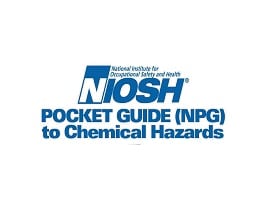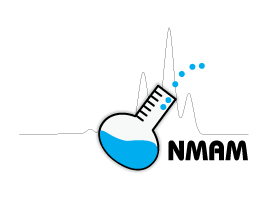Hydrogen Cyanide

Overview
CAS No.74-90-8
Hydrogen cyanide (HCN) is a colorless or pale-blue liquid or gas with a bitter, almond-like odor. Hydrogen cyanide interferes with the body’s use of oxygen and may cause harm to the brain, heart, blood vessels, and lungs. Exposure can be fatal. Workers may be harmed from exposure to hydrogen cyanide. The level of exposure depends upon the dose, duration, and work being done.
Hydrogen cyanide may be used in the workplace for fumigation, electroplating, mining, chemical synthesis, and the production of synthetic fibers, plastics, dyes, and pesticides. Some examples of workers at risk of being exposed to hydrogen cyanide include the following:
- Workers who fumigate ships and buildings
- Agricultural workers who fumigate outdoor pests in areas such as fruit orchards
- Factory workers in industries that manufacture acrylic fibers, synthetic rubber, and plastics
- Steel and iron workers who work in plants that harden iron and steel
NIOSH recommends that employers use the Hierarchy of Controls to prevent injuries. If you work in an industry that uses hydrogen cyanide, please read chemical labels and the accompanying Safety Data Sheets for hazard information. Visit NIOSH’s page on Managing Chemical Safety in the Workplace to learn more about controlling chemical workplace exposures.
The following resources provide information about occupational exposure to hydrogen cyanide. Useful search terms for hydrogen cyanide include “formonitrile,” “hydrocyanic acid,” and “prussic acid.”
NIOSH Chemical Resources
Related NIOSH Resources
- NIOSHTIC-2 search results for hydrogen cyanide—NIOSHTIC-2 is a searchable database of worker safety and health publications, documents, grant reports, and journal articles supported in whole or in part by NIOSH.
- Immediately Dangerous to Life or Health (IDLH) Value Profile: Hydrogen Cyanide —NIOSH reviews relevant scientific data and researches methods for developing IDLH values.
- Hydrogen Cyanide (No. 6010)—NMAM sampling and analysis of contaminants in workplace air, and in the blood and urine of workers who are occupationally exposed.
- Hydrogen Cyanide (No. 6017)—NMAM sampling and analysis of contaminants in workplace air, and in the blood and urine of workers who are occupationally exposed.
- Cyanides (aersols and gases) (No. 7904)—NMAM sampling and analysis of contaminants in workplace air, and in the blood and urine of workers who are occupationally exposed.
- NIOSH Worker Health Study Summaries—NIOSH conducts research to prevent illnesses and injuries in the workplace. The NIOSH Worker Notification Program notifies workers and other stakeholders about the findings of these research studies.
Selected Publications
- Preventing hearing loss caused by chemical (Ototoxicity) and noise exposure—DHHS (NIOSH) No. 2018-124.
- A Summary of Health Hazard Evaluations: issues related to occupational exposure to fight fighters, 1990-2001—DHHS (NIOSH) No. 2014-115.
- The Emergency Response Safety and Health Database: Hydrogen Cyanide—The ERSH-DB contains accurate and concise information on high-priority chemical, biological and radiological agents that could be encountered by personnel responding to a terrorist event.
- NIOSH Criteria Documents: Criteria for a Recommended Standard: Occupational Exposure to Hydrogen Cyanide and Cyanide Salts—DHHS (NIOSH) No. 77-108 Presents a standard to prevent the adverse effects of exposure to Hydrogen Cyanide and Cyanide Salts over a working lifetime.
Related Resources
- ATSDR Medical Management Guidelines (MMGs): Hydrogen Cyanide
- ATSDR ToxFAQs: Cyanide
- ATSDR Toxicological Profile for Cyanide
- EPA Chemistry Dashboard
- EPA Acute Exposure Guideline Levels (AEGLs): Hydrogen Cyanide
- EPA Air Toxics: Cyanide Compounds
- EPA Integrated Risk Information System (IRIS): Hydrogen Cyanide
- Homeland Security: National Terror Alert: Hydrogen Cyanide
- NLM Hazardous Substance Data Bank: Hydrogen Cyanide
- NLM, Haz-Map: Hydrogen Cyanide
- OSHA Chemical Sampling Information: Hydrogen Cyanide
- OSHA Hazard Communication
International Resources
- Canadian Centre for Occupational Health and Safety (CCOHS): Hydrogen cyanide search results
- European Chemicals Agency (ECHA): Hydrogen Cyanide
- Gestis Substance Database
- ILO International Safety Chemical Safety Card: Hydrogen Cyanide
- IPCS INCHEM, CICADS 61: Hydrogen Cyanide and Cyanides
- OECD Global Portal to Information on Chemical Substances



